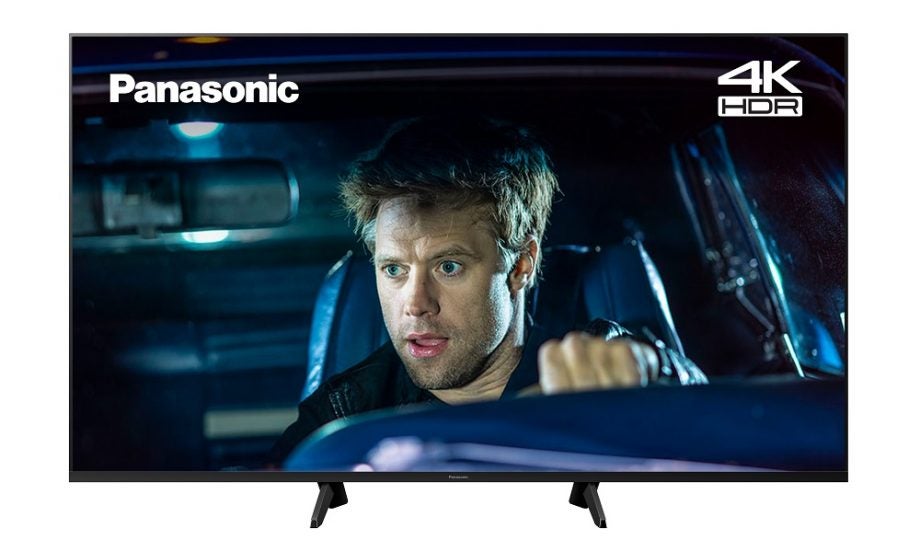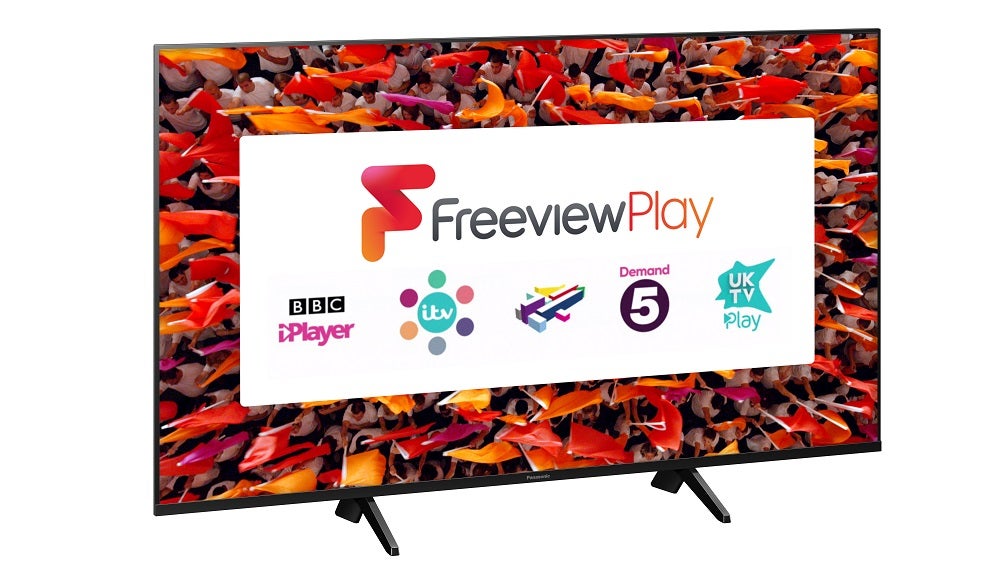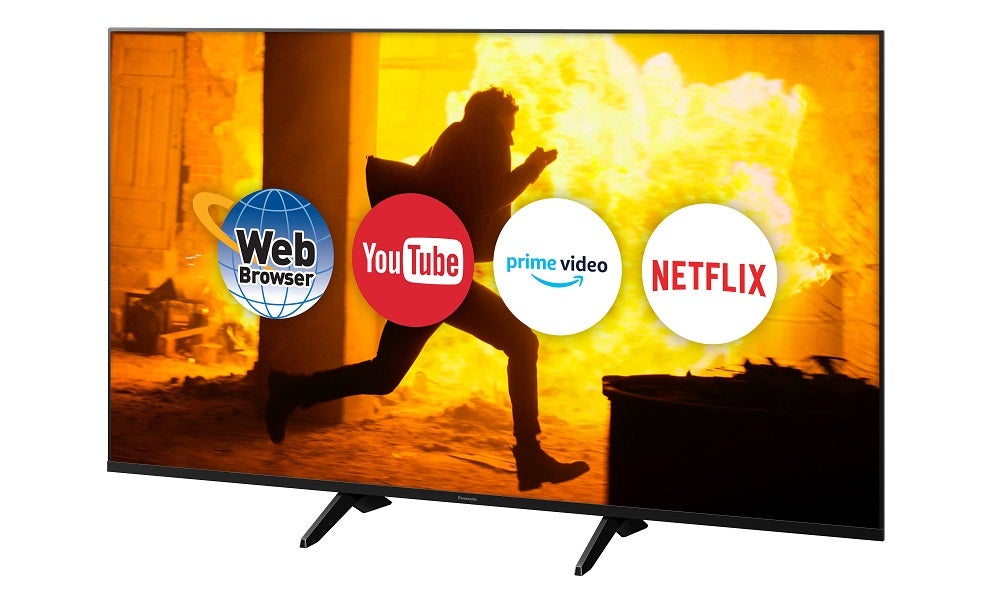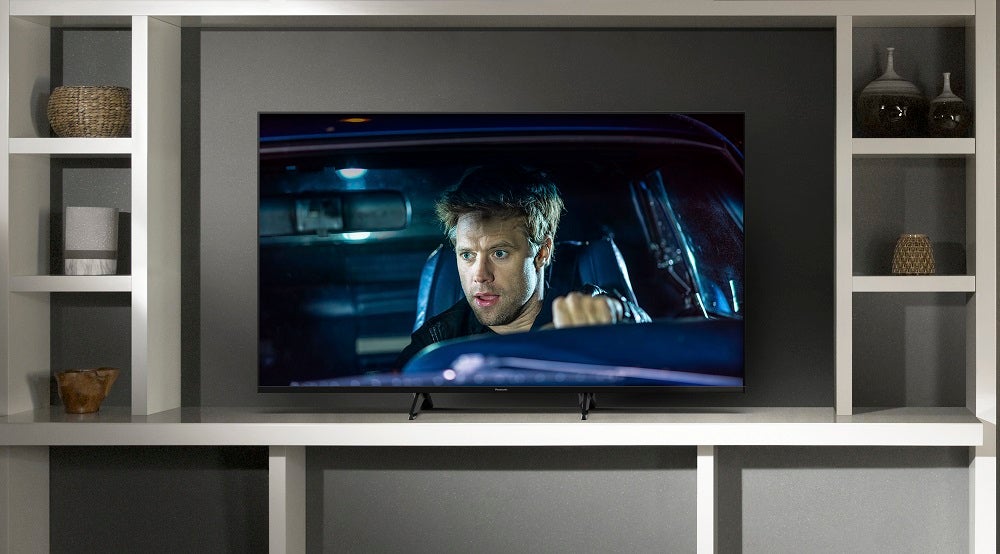Panasonic TX-50GX700B Review
Panasonic TX-50GX700B Review
You’ll be hard-pushed to find this level of performance, at the size and price, elsewhere

Verdict
If you can live without Dolby Vision HDR, voice control and the last degree of adjustability, then you need to consider the TX-50GX700B. You’ll be hard-pushed to get this much performance, at the size and price, elsewhere.
Pros
- Composed, believable images from any source
- Good upscaling
- Fine OS
- Not bad sound
Cons
- Some backlight niggles
- Not the most dynamic pictures
Key Specifications
- Review Price: £550
- 3840 x 2160
- HDR10+
- HDMI ARC
What is the Panasonic TX-50GX700B?
The Panasonic TX-50GX700B sits beneath the TX-50GX800B in Panasonic’s TV range, omitting Dolby Vision, Atmos and the HCX processor – but keeping HDR10+ and Freeview Play.
Either our living rooms are getting larger or we’re enjoying watching TV more than ever. It wasn’t that long ago, after all, that a 50in TV such as this was considered undeniably big. Today, however, Panasonic’s GX700 range contains only one screen that’s smaller than this model, and a couple (58in and 65in) that bring an entirely new definition to ‘big TV’.
At the same time that the average screen size is rising, specifications are through the roof while prices are through the floor. A 50in, HDR-equipped 4K LED TV from a big, well-regarded brand for only £550?
Can there possibly be any need to pay three times that for an entry-level OLED equivalent? Or is this mainstream, populist Panasonic a false economy?
Panasonic TX-50GX700B design – Lacking the pizzazz of Panasonic’s premium models, but still a fine-looking TV
The Panasonic TX-50GX700B certainly doesn’t look like a TV built down to a price. In terms of design, it has exactly what most people want from their TV: plenty of screen and very little bezel.
The “terraced” effect of the bezel, with the screen itself sitting just slightly proud of its surround, minimises everything that isn’t screen when you look at the Panasonic from straight-on. From the side, the TX-50GX700B is remarkably slim by LED-backlit LCD TV standards – or, at least, the top half is.

From halfway down, the Panasonic flares out to a more usual 6.3cm – so it’s still a valid wall-mounting proposition. That depth rises to a little over 24cm when the screen is standing on its simple plastic feet, but at least they’re not so far apart that the 112cm-wide Panasonic needs an especially broad surface on which to stand.
The visible plastics are subtly shiny, and the corners of the bezel are gently smoothed off. The TX-50GX700B may not have any of the visual pizzaz of Panasonic’s more expensive models, but nothing about the way it’s designed, built or finished is going to make you feel like a tight-wad.
Panasonic TX-50GX700B features – No Dolby Vision or Atmos, but HDR10+ remains from more premium sets
There isn’t much about the TX-50GX700B’s feature-list that will suggest you’ve been a cheapskate, either. At this sort of money, you could reasonably describe the Panasonic as “fully loaded”.
That translates to a 3840 x 2160 4K resolution, augmented by the HDR standards HLG (for appropriate broadcasts), HDR10 and dynamic metadata HDR10+. Unlike some of Panasonic’s slightly more expensive LED TVs, there’s no Dolby Vision HDR here – but did I mention the price of this TV? For this money you can’t expect to have jam on it.
There are three HDMI inputs, all 4K 60/50p with HDCP2.2, and one with the all-important audio return channel capability. These are joined by a couple of USB slots (one 3.0, the other 2.0) so you can enjoy some PVR functionality, an Ethernet socket, a digital RF tuner (there’s no satellite tuner on board), component audio/video RCA inputs and a CI slot.
These inputs are accompanied by digital optical and 3.5mm analogue audio outputs. And, of course, there’s Wi-Fi on board for a wireless Smart TV experience.
Panasonic has tidied up its “My Home Screen” operating system for the whole GX range – and it’s one of the more coherent and less cluttered efforts on the market. Anyone who has used a Panasonic TV any time in the past five years or so will be familiar with the look and some of the pages, certainly. However, thanks to its customisation options and unequivocal big-print iconography, it’s one of the more usable efforts around.
Related: Best Cheap TVs

The remote control supplied with the TX-50GX700B is equally familiar. Panasonic hasn’t deviated from its handset template in any meaningful way for some years. So, aside from a dedicated “Freeview Play” button, this is the same logical and unremarkable controller we’ve been seeing for some time.
The setup menus this unit allows you to navigate are similarly clear, comprehensive and simple to understand. You don’t get the endless adjustability you’ll find with, say, a Philips alternative – but that isn’t necessarily a negative. You’ll find yourself fiddling with backlighting and brightness quite a bit during your initial viewing, but once you have that balanced to your satisfaction then you can simply sit back and enjoy.
On a technical level, this TV is governed by Panasonic’s 4K Studio Colour picture processing engine. Not surprisingly, it isn’t the company’s top-of-the-range processor. Let’s face it, though: a cutting-edge picture processing engine from a couple of years ago won’t have suddenly become useless.
The LCD panel is lit by LEDs around its edge; but Panasonic’s Adaptive Backlight Dimming algorithm promises greater control and uniformity of backlighting than “edge-lit” usually delivers.
Panasonic TX-50GX700B picture quality – Despite some inconsistencies in backlighting, this is an impressive picture for the price
How do you make a £550 50in LCD TV look its best? By taking advantage of its most impressive features, of course. So the test starts with a 4K HDR10+ Blu-ray of Godzilla: King of the Monsters – and I’m happy to report that the Panasonic impresses across the board.
In most significant ways, the Panasonic TX-50GX700B does great work with this top-of-the-shop content. The colour balance is convincing in its neutrality – even during the many moments of visual overdrive, the Panasonic remains poised. Even the skin-tones are natural and believable.
Contrasts are reasonably strong, too, especially if you’ve put the time in with the Contrast, Backlight and Brightness settings. The TX-50GX700B puts an impressive amount of detail into its nicely graded black tones, and they’re only minimally corrupted by sharing the screen with clean, bright whites.
Motion stability is admirable, edges are drawn smoothly, and there’s decent three-dimensionality to images too. Complex patterns remain calm and consistent during even the most hectic scenes.
Related: Best TVs

The 21:9 aspect ratio reveals some minor inconsistencies in the backlighting in the black bars (especially at the bottom of the screen), but taken as a complete package the TX-50GX700B makes 4K HDR10+ look handsome.
Stepping down in quality, theoretically at least, to an Amazon Prime stream of King Lear (4K HDR10+) allows the good news to continue coming. There’s real subtlety to colours and textures, the same grippy facility with motion, the same pleasing contrasts, the same slight unevenness to backlighting during very dark scenes.
It isn’t the punchiest picture you’ll ever see, but there’s a natural quality to the Panasonic’s images that goes quite a long way towards making up for it.
The Panasonic will never fool you into thinking you’re watching 4K material if it’s upscaling a 1080p image, but it certainly remains very watchable. Watching The NFL Show via BBC iPlayer results in a slight softening of the overall image, a little more picture noise (especially in the big swathes of uniform colour) and a little less fine detail. However, there are worse upscalers around that cost more money.
Sports shows are a very difficult gig for LCD TVs and, sure enough, there’s just enough grime in the TX-50GX700B’s motion handling to make you aware of how hard it’s working.
The more you reduce the resolution of your content, the rougher the Panasonic’s picture becomes – entirely predictable and far from unique to the TX-50GX700B. If you like to watch daytime TV repeats of 4:3 content, you’d probably be better off with a smaller screen.
Related: What is HDR10+?
Panasonic TX-50GX700B sound quality – A decent-sounding TV
The TX-50GX700B makes the most of its two full-range drivers and 20W of audio power. It can’t do anything more than hint at low-frequency activity, naturally – but the stuff it can reproduce is distinct and direct.
There’s a degree of detail in the mid-range that gives voices proper character and expression, and a well-judged degree of attack at the top-end. Flatscreen TV sound is often little more than an afterthought, but the Panasonic will prove a fair bit more adept than most screens at this sort of money.
That doesn’t mean you shouldn’t consider a modest soundbar at the very least, mind.
Related: Best soundbars
Should I buy the Panasonic TX-50GX700B?
The simple fact is this: if you want a 50in (ish) TV for around £550 (ish), you’re not exactly spoiled for choice.
If you shop around you’ll find Samsung’s impressive UE49RU8000 for under £700, but that’s still a chunk more than the Panasonic TX-50GX700B costs. If you want a bit of Ambilight-based pizzazz then the Philips 50PUS6703 is still available – and in some ways, it’s a match for the TX-50GX700B. Not in every way, though, and that makes the Panasonic a slightly better bet.
So if you can live without Dolby Vision, without voice control and without the last degree of adjustability then you need to consider the TX-50GX700B. You’ll be hard-pushed to get this much performance, at the size and price, elsewhere.
How we test televisions
We test every TV we review thoroughly over an extended period of time. We use industry standard tests to compare features properly. We’ll always tell you what we find. We never, ever, accept money to review a product.


